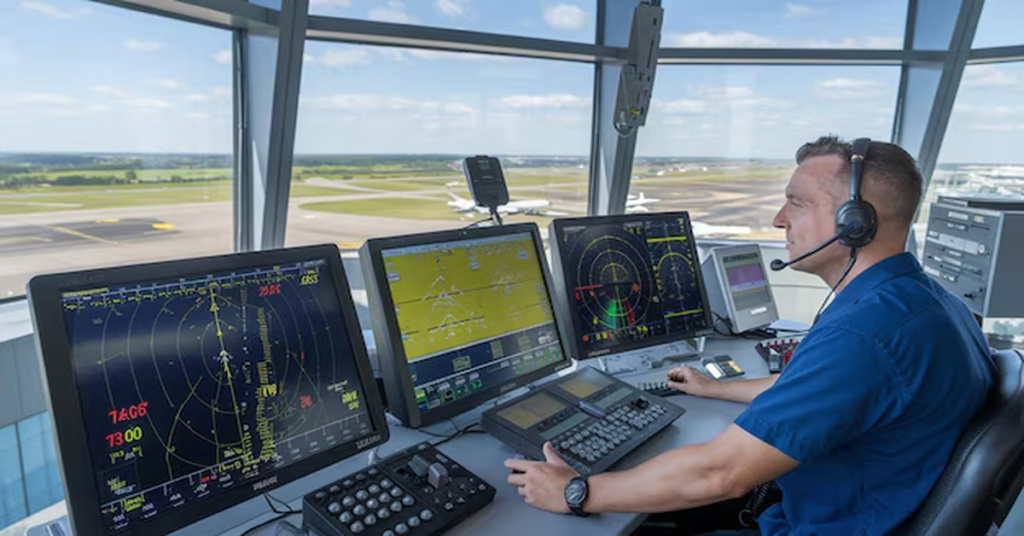The E6B flight computer, also known as the “whiz wheel,” is an essential tool for pilots. It helps in performing various flight calculations, such as fuel consumption, wind correction, ground speed, and time en route. Despite the availability of modern electronic flight planning tools, the E6B remains a fundamental instrument in aviation training and practical navigation.
This article provides an in-depth understanding of the E6B flight computer, its history, functionalities, usage in aviation, and a step-by-step guide on performing common calculations. Additionally, we will discuss the importance of mastering this tool and its relevance in today’s technology-driven aviation industry.
History and Evolution of the E6B Flight Computer
The E6B was invented in the 1930s by Lieutenant Philip Dalton, a U.S. Navy officer. Originally designed for military pilots, the E6B gained popularity in civilian aviation due to its accuracy and versatility. Over the decades, the tool has undergone improvements, but its fundamental design remains the same.
Today, the E6B is available in both traditional mechanical (circular slide rule) and digital formats. While digital versions offer automation and convenience, many pilots still prefer the traditional E6B due to its reliability in situations where electronic devices may fail.
Structure and Components of the E6B Flight Computer
The E6B flight computer consists of two main sides:
- The Wind Side (Wind Correction Side)
- Used for calculating wind correction angles, ground speed, and drift.
- Features a rotating transparent disk and grid pattern to align wind direction and speed.
- The Calculator Side
- Functions as a circular slide rule for performing multiplication, division, time-speed-distance calculations, and conversions.
- Includes markings for unit conversions such as temperature, altitude, and fuel consumption.
Common Calculations Using the E6B Flight Computer
1. Time, Speed, and Distance Calculations
One of the most common uses of the E6B is to determine the time required to travel a given distance at a specific speed.
Example:
- Given: Distance = 150 nautical miles, Ground Speed = 120 knots
- Solution: Align 120 knots on the outer scale with the inner time scale. Find 150 nautical miles and read the time required.
2. Fuel Consumption Calculations
Pilots must ensure they have sufficient fuel for their flights, considering the fuel burn rate.
Example:
- Given: Fuel burn rate = 10 gallons per hour, Flight time = 2.5 hours
- Solution: Align fuel burn rate with time and read total fuel consumption.
3. Wind Correction Angle and Ground Speed
The wind correction function helps pilots adjust their heading to compensate for wind drift.
Example:
- Given: True airspeed = 130 knots, Wind speed = 20 knots from 045 degrees
- Solution: Use the wind correction grid to determine drift angle and corrected heading.
4. True Airspeed and Density Altitude Adjustments
The E6B allows pilots to calculate true airspeed by accounting for temperature and pressure altitude.
Example:
- Given: Indicated airspeed = 100 knots, Pressure altitude = 5000 feet, Temperature = -5°C
- Solution: Align altitude and temperature to read true airspeed.
5. Converting Units (Temperature, Distance, Speed, Fuel)
The E6B simplifies conversion between different aviation units, including Celsius to Fahrenheit, gallons to liters, and knots to miles per hour.
Why Pilots Still Use the E6B Flight Computer
1. Reliability and Independence from Electronics
- Unlike digital devices, the E6B does not require batteries or electrical power.
- Ensures pilots can perform critical calculations in case of an electronic failure.
2. FAA Requirements
- Many pilot licensing exams, including the FAA Private Pilot Knowledge Test, require proficiency in using the E6B.
- Mastery of the E6B is considered essential for professional pilot training.
3. Strengthening Mental Calculation Skills
- Enhances pilots’ understanding of flight planning principles.
- Helps in quick problem-solving without relying on automation.
Digital vs. Manual E6B Flight Computers
Manual E6B (Traditional Slide Rule)
✅ Pros:
- Works without power
- Durable and reliable
- Widely accepted in aviation exams
❌ Cons:
- Requires manual effort
- Takes time to master
Electronic E6B (Digital Calculator)
✅ Pros:
- Faster calculations
- Additional features like weight and balance calculations
❌ Cons:
- Requires batteries
- Not always permitted in certification exams
Tips for Mastering the E6B Flight Computer
- Practice Regularly – Use real-world flight planning scenarios to improve accuracy.
- Learn One Function at a Time – Master time-speed-distance calculations before moving on to wind correction.
- Use FAA-Provided Training Materials – The FAA offers practice guides and manuals on E6B usage.
- Join Aviation Study Groups – Engaging with other pilots helps reinforce learning.
- Use Both Digital and Manual Versions – Familiarity with both ensures adaptability in various flight scenarios.
Conclusion
The E6B flight computer is an indispensable tool for pilots, providing critical flight planning and navigation calculations. While modern electronic devices offer alternatives, the reliability and FAA requirements make the E6B a must-learn skill for aviation professionals.
By understanding the structure, functions, and calculations of the E6B, pilots can enhance their proficiency in flight navigation and ensure safety in the skies. Whether using the traditional slide rule or digital variant, mastering the E6B strengthens fundamental aviation knowledge and problem-solving abilities.
FAQs
1. Is the E6B flight computer still relevant in modern aviation?
Yes, despite advanced digital tools, the E6B is required for flight training, FAA exams, and serves as a reliable backup in flight planning.
2. How long does it take to learn the E6B?
Mastering basic functions can take a few days, but becoming proficient in all calculations may take weeks of practice.
3. Can I use a digital E6B for FAA exams?
Some FAA exams allow digital E6Bs, but many require the manual slide rule version. Always check the exam guidelines beforehand.
4. What are the advantages of using the E6B over a calculator?
The E6B does not require batteries, is approved for aviation exams, and helps pilots develop better mental calculation skills.
5. Where can I buy an E6B flight computer?
The E6B is available through aviation retailers, pilot supply stores, and online marketplaces like Amazon and Sporty’s Pilot Shop.
6. Are there mobile apps that simulate the E6B flight computer?
Yes, several aviation apps offer E6B simulations, but they may not be accepted in official exams or flight training programs.







